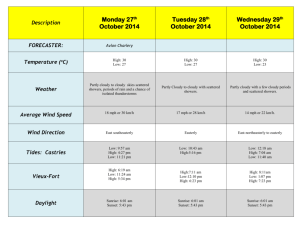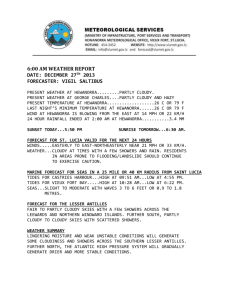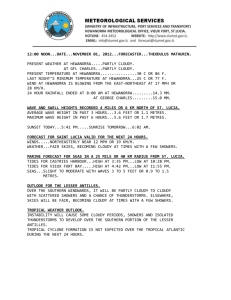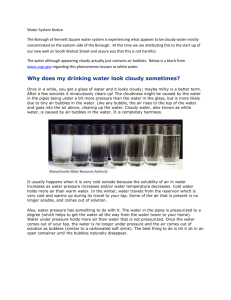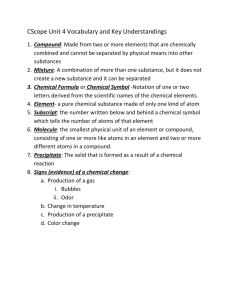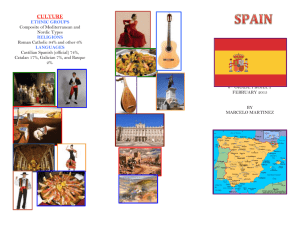File
advertisement
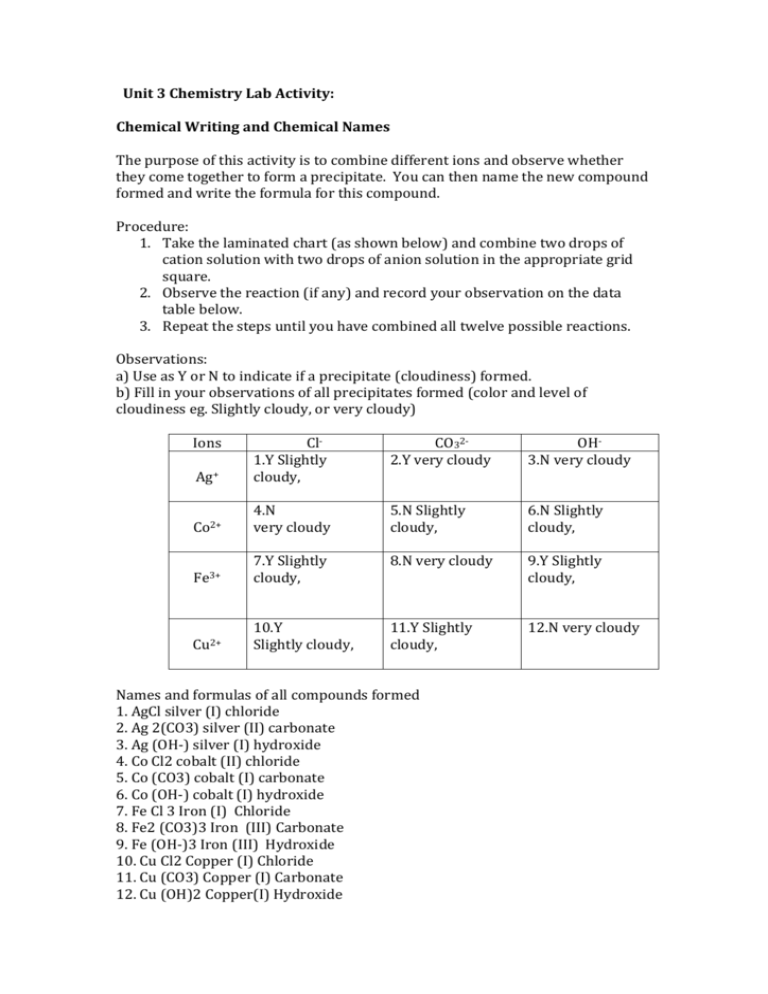
Unit 3 Chemistry Lab Activity: Chemical Writing and Chemical Names The purpose of this activity is to combine different ions and observe whether they come together to form a precipitate. You can then name the new compound formed and write the formula for this compound. Procedure: 1. Take the laminated chart (as shown below) and combine two drops of cation solution with two drops of anion solution in the appropriate grid square. 2. Observe the reaction (if any) and record your observation on the data table below. 3. Repeat the steps until you have combined all twelve possible reactions. Observations: a) Use as Y or N to indicate if a precipitate (cloudiness) formed. b) Fill in your observations of all precipitates formed (color and level of cloudiness eg. Slightly cloudy, or very cloudy) Ions Ag+ Cl1.Y Slightly cloudy, CO322.Y very cloudy OH3.N very cloudy Co2+ 4.N very cloudy 5.N Slightly cloudy, 6.N Slightly cloudy, 7.Y Slightly cloudy, 8.N very cloudy Fe3+ 9.Y Slightly cloudy, 10.Y Slightly cloudy, 11.Y Slightly cloudy, 12.N very cloudy Cu2+ Names and formulas of all compounds formed 1. AgCl silver (I) chloride 2. Ag 2(CO3) silver (II) carbonate 3. Ag (OH-) silver (I) hydroxide 4. Co Cl2 cobalt (II) chloride 5. Co (CO3) cobalt (I) carbonate 6. Co (OH-) cobalt (I) hydroxide 7. Fe Cl 3 Iron (I) Chloride 8. Fe2 (CO3)3 Iron (III) Carbonate 9. Fe (OH-)3 Iron (III) Hydroxide 10. Cu Cl2 Copper (I) Chloride 11. Cu (CO3) Copper (I) Carbonate 12. Cu (OH)2 Copper(I) Hydroxide Photo of spotplate: Questions: 1. What is happening at the molecular level for a precipitate to form? (google this) - the condensation due to cooling of an H20 molecule to form a liquid 2. Suggest a logical reason why the ions in one compound would separate from each other (eg. Dissolve in water), while they wouldn't be dissolved in another compound (as they come together in forming a precipitate.) eg. What forces could be at play here? - Because they meet with something different and therefore causing a chemical reaction that makes them separate from each other. 3. In making formulas of compounds, why would you use parentheses sometimes? - Because it includes the whole element/compound and it makes the reader know that you are making formulas. 4. At what time do you use roman numerals? Is this used in naming, or making formulas of compounds? - It is used for naming, for naming you use roman numerals only for metals and we exclude alkaline metal and earth metals. 5. A) What letters do we use after a formula to indicate the state of the compound? - We use the letter (ag) (s) and (L) to indicate the state of the compound. b) When a compound dissolves in water, how do indicate this with the formula of the compound? - you look at the products of the compound after the compound dissolves in water. c) At the molecular level, describe the ionic compound when it is dissolved in water. - The ionic compound is separated from each other. Brief reflection statement of what you learned in this activity. - Something I learned in this activity is being able to observe the combining of the compounds and also what happens when you combine.


